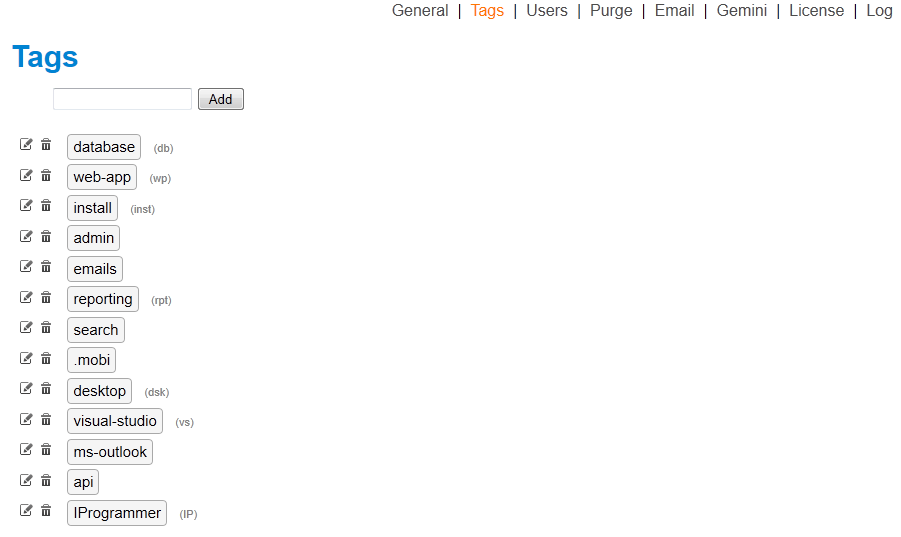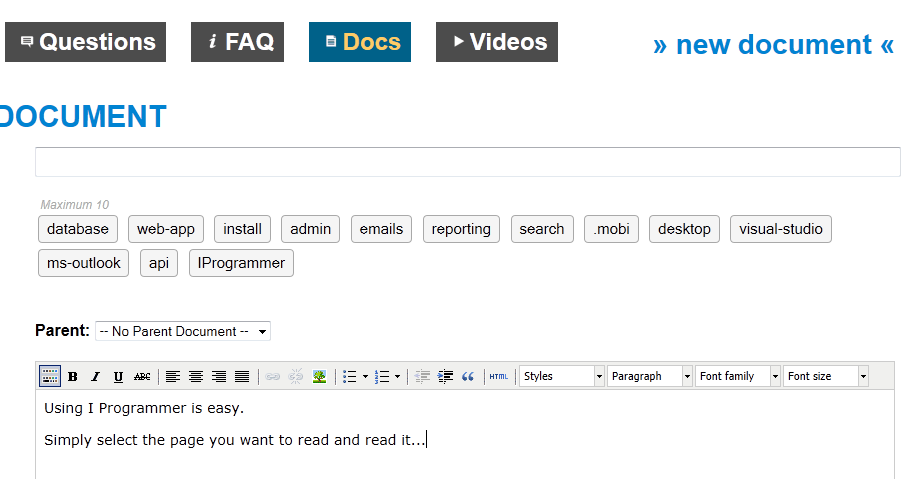| Atlas - the easy way to keep the customer satisfied |
| Written by Ian Elliot | |||
| Wednesday, 20 July 2011 | |||
Page 2 of 2
Customizing AtlasUsing the Web Matrix WorkBench you can start Atlas running - either click Run or the URL indicated. When the Atlas main page opens you have to sign in as the administrator using: admin@atlasanswer.com and the password is admin At this point it is worth noticing that Atlas lets a user sign in with their OpenID or they can register and get an Atlas ID - this is the sort of flexibility that is the advantage of using an off-the-shelf solution. Registration takes the user email address and password and that's all. When you log on as an administrator you can customize and manage the site. To do this you click on the spanner and screwdriver icon in the top right-hand corner:
From here you can use the tabbed pages to setup the basic look an workings of Atlas. You can setup which modules are displayed and basic parameters such as number of tags etc. If you really don't want to support any of the standard authentications then you can disable them, supply welcome messages and so on. Perhaps most important is building a reasonably appropriate list of tags so that users can filter information easily. You can also administer users from here including creating users in different administration categories.
Notice that your site is live at this point and users can sign up and post questions and answers. To post FAQs, Docs and Videos you simply return to the site proper and use the add buttons to the far right. This only appear for users in the correct administrative category. Notice that this free version has no limit on the number of questions and is fully functional. Its limitation is that you are restricted to five FAQs, Docs or videos.
This is a very fast way to get a support web site up and running. Going deeperBut you are a developer and at some point in the future you many want to go outside what's provided. You can do simple things in Web Matrix Workbench. You can for example look and work with the database directly if you really need a batch update of some kind. If you really want to change things you need to move to Visual Studio. At this point when you take a look at the files in the View folder you will discover that they are not quite normal HTML. They are in fact Spark files which are used with the Spark View Engine. In most cases tweaking the CSS files or changing the graphics files should be all you need to do. Other notable features of Atlas are that it integrates with the Gemini project manager/bug tracker and it supports the Metablog API. The API has to be enabled before you can use it but it allows the remote submission and editing of questions and represents an easy way to extend the way Atlas works. More information and to downloadSee also |
|||
| Last Updated ( Wednesday, 20 July 2011 ) |

